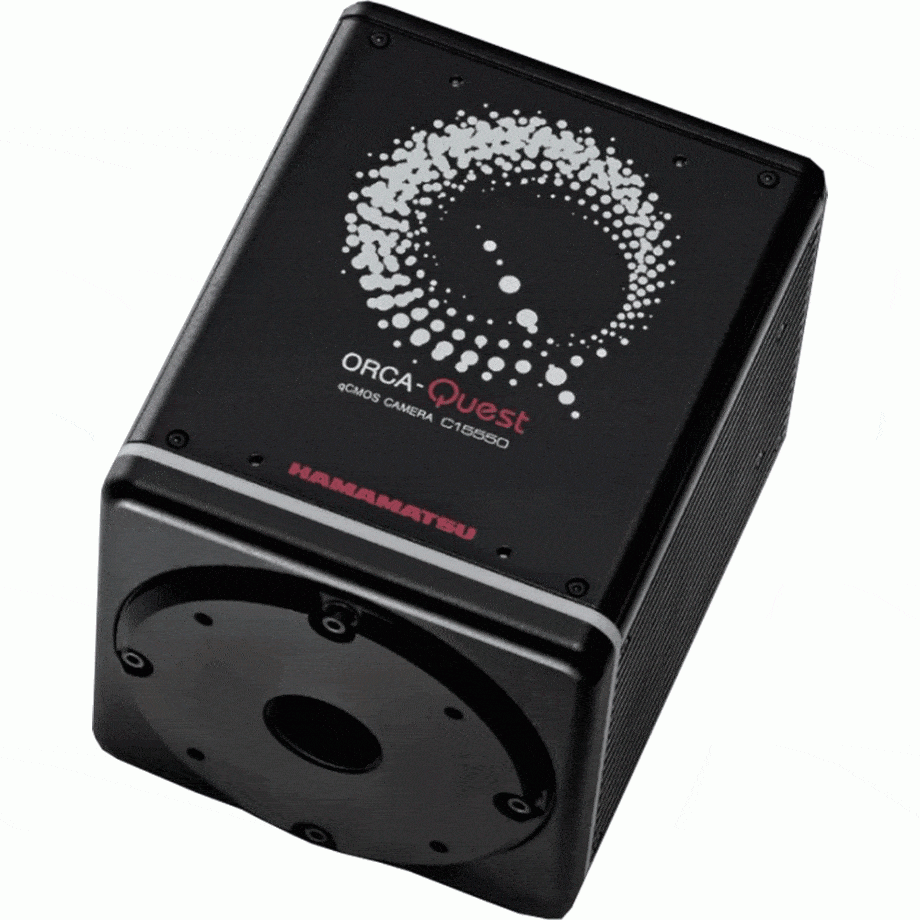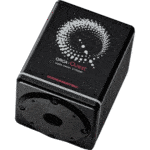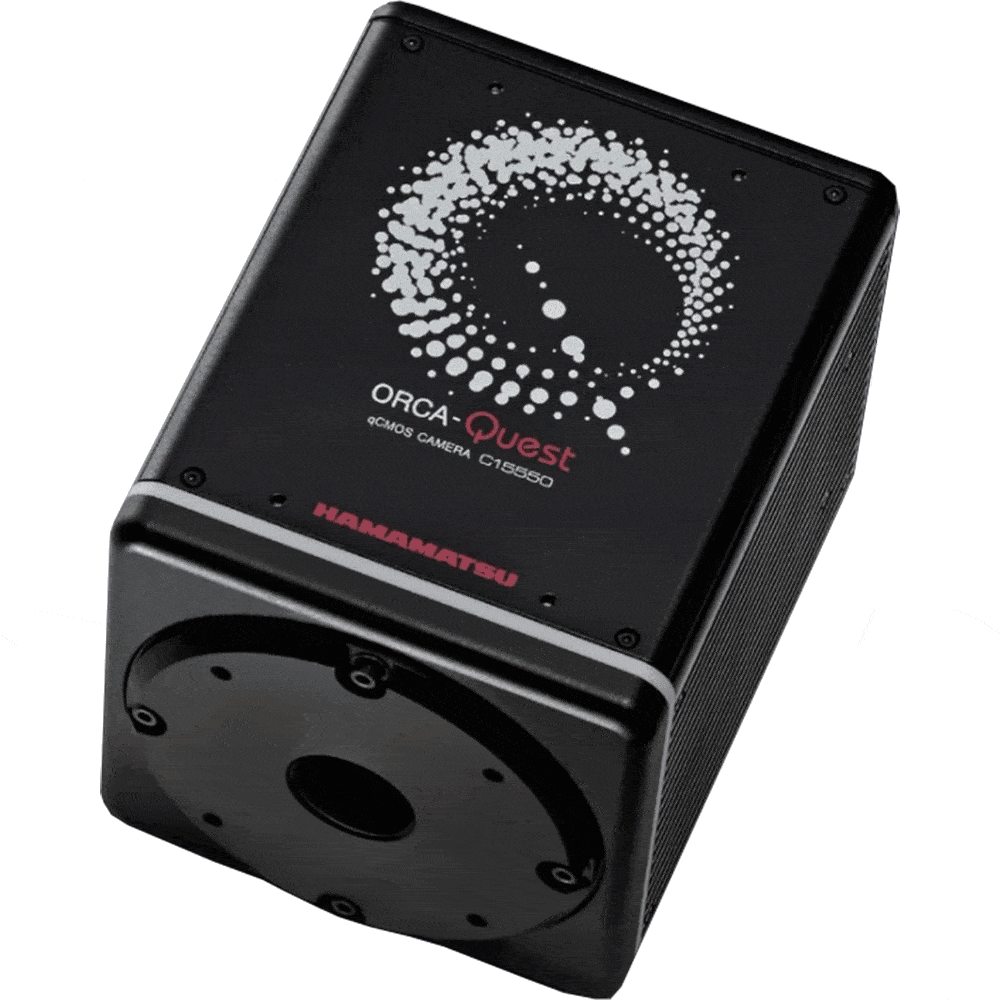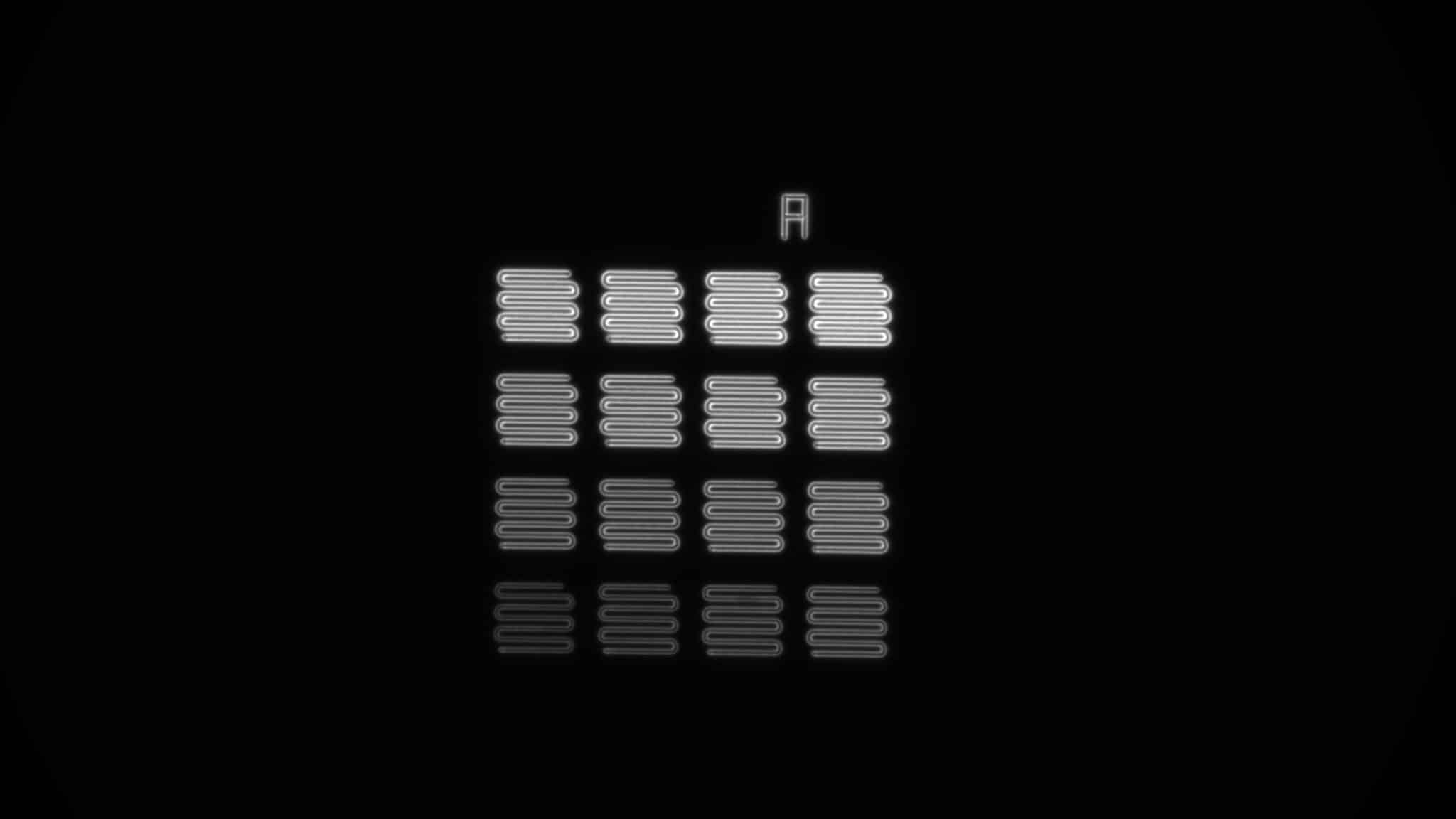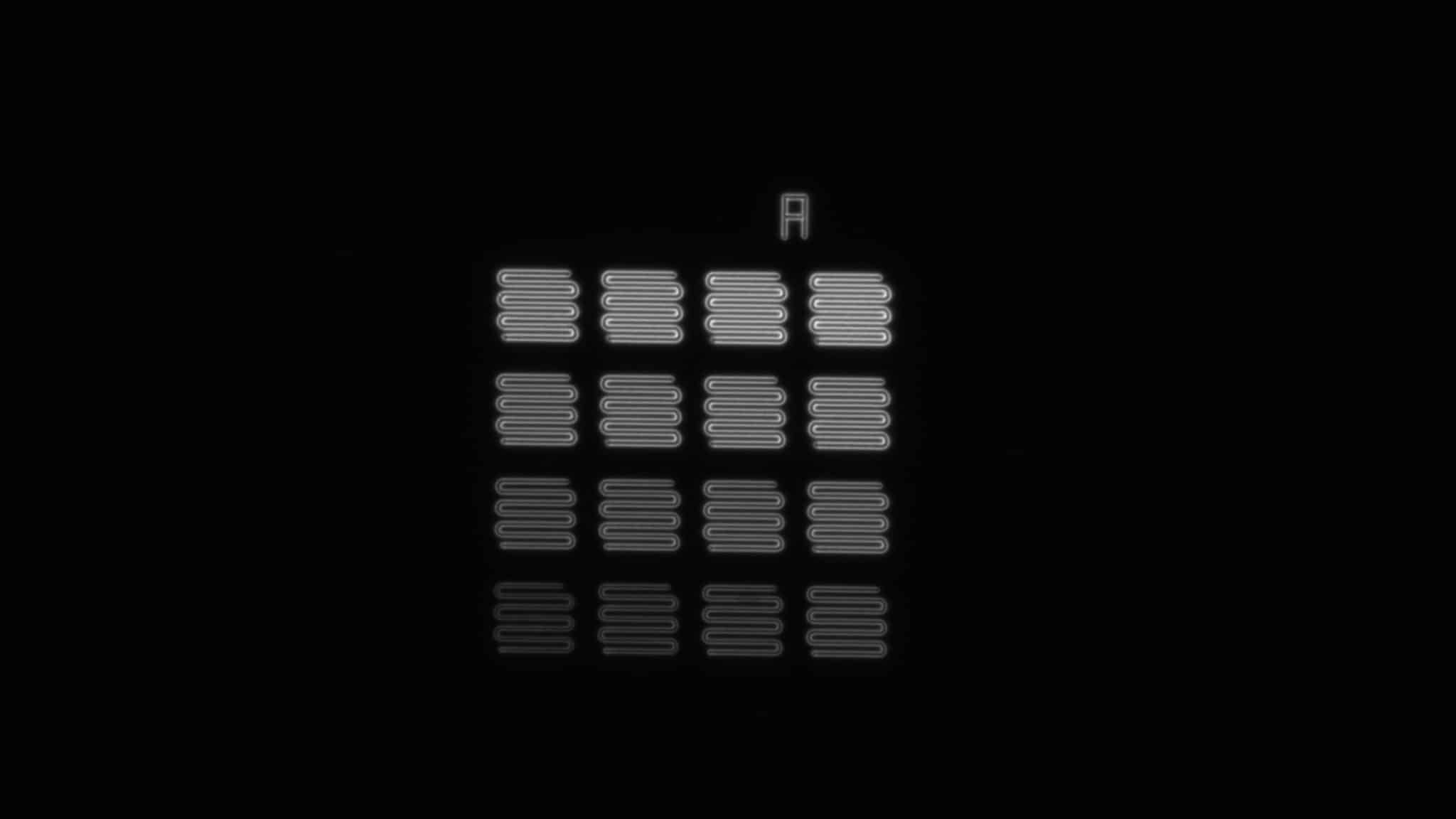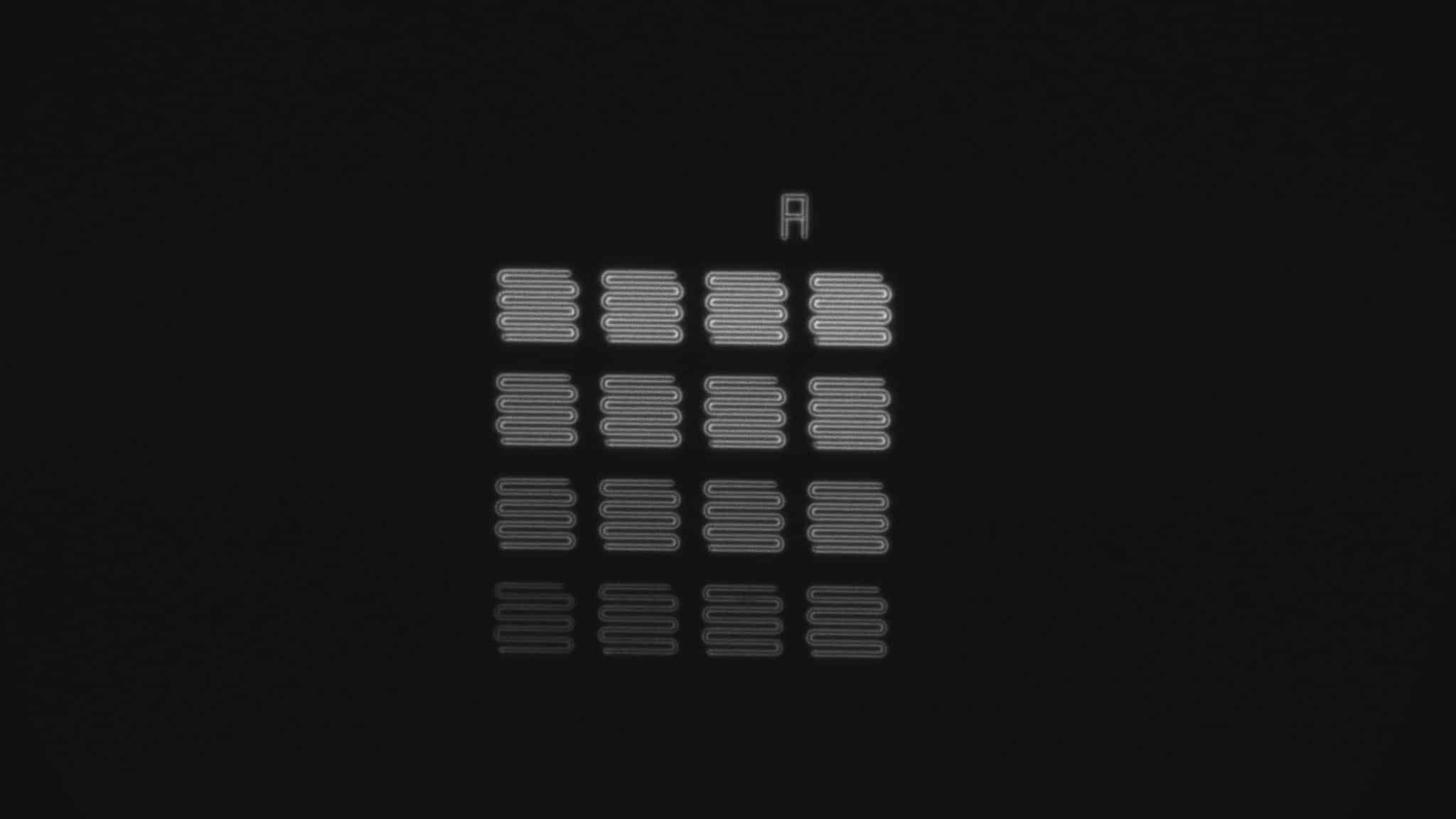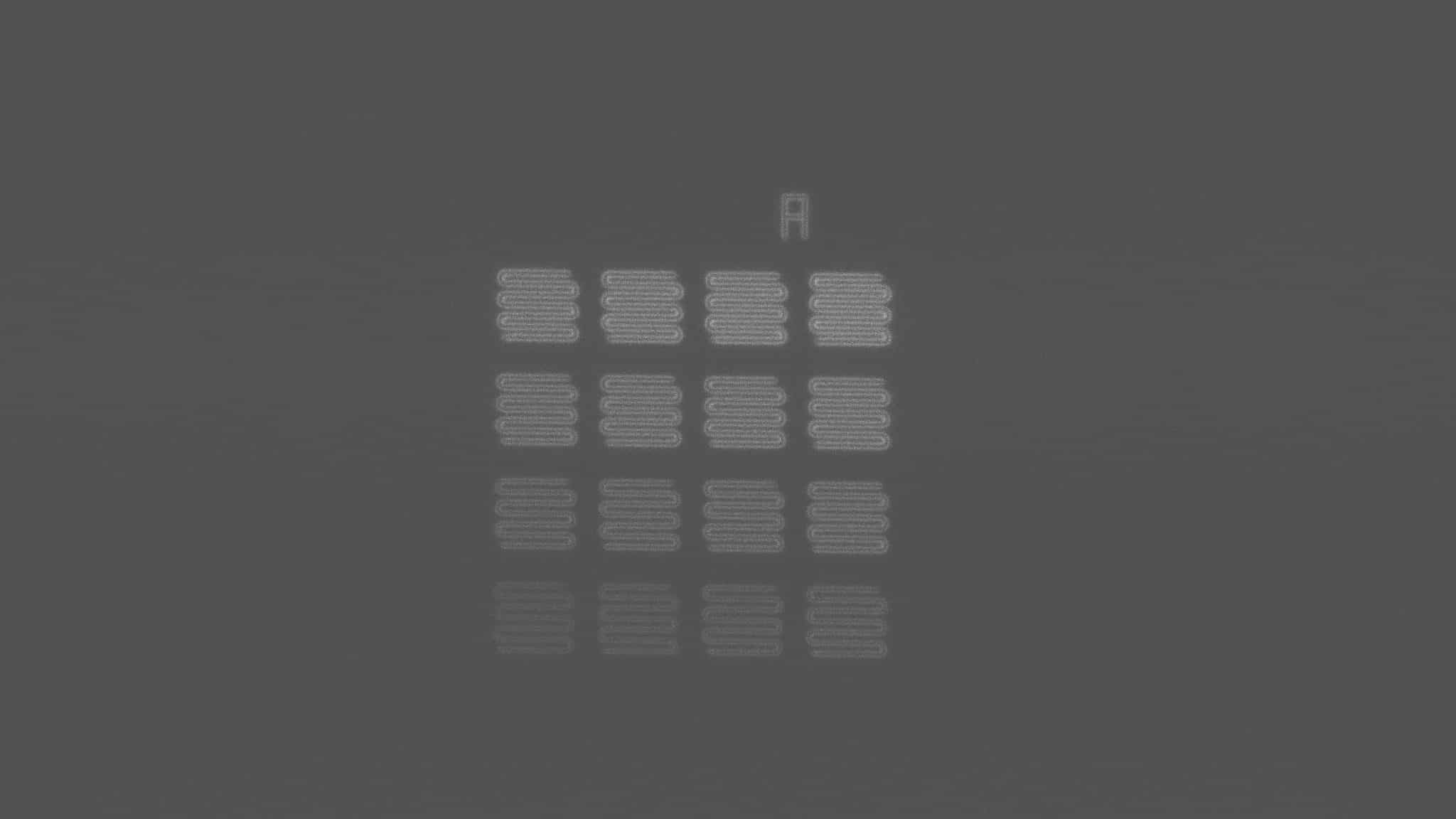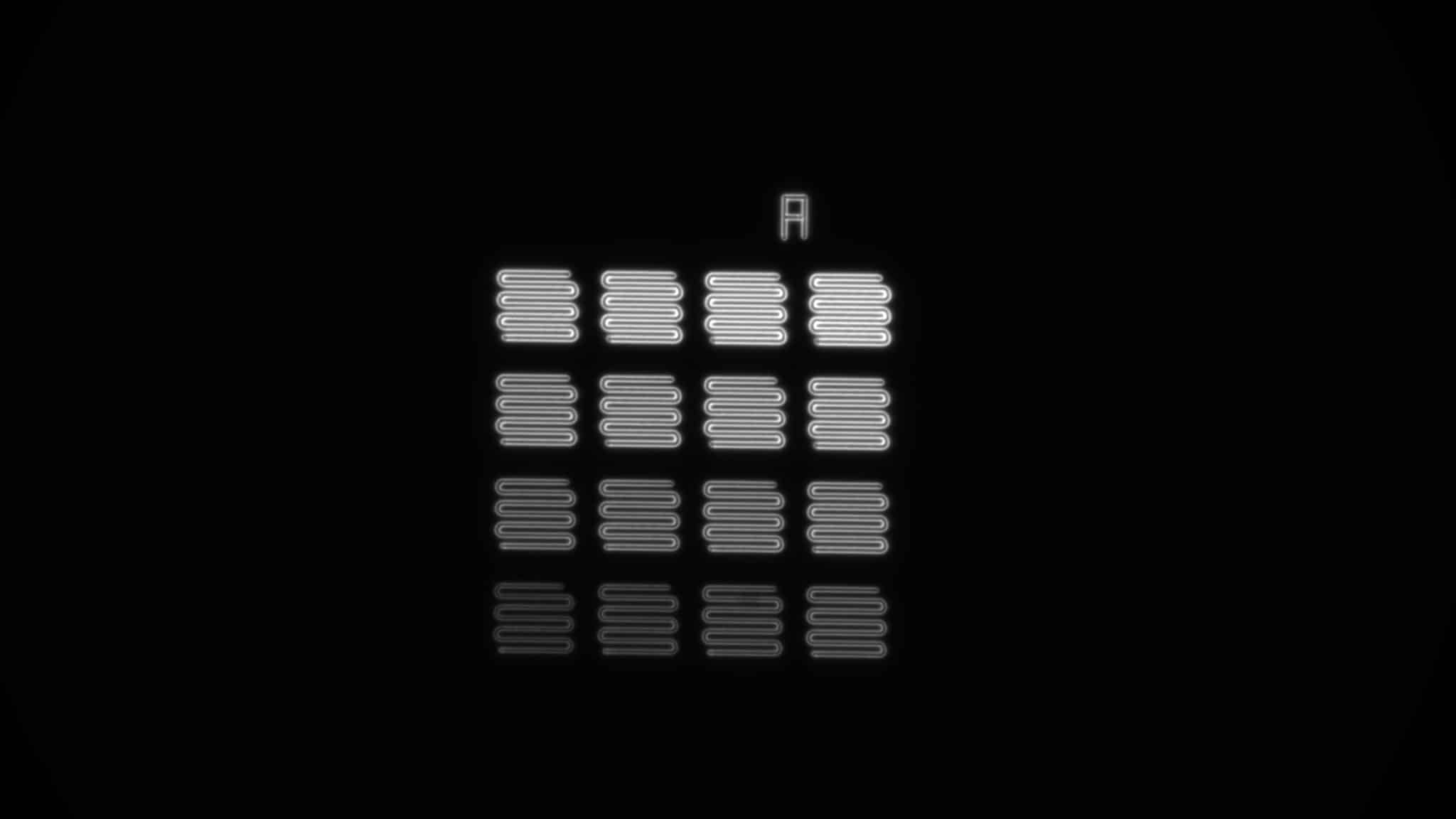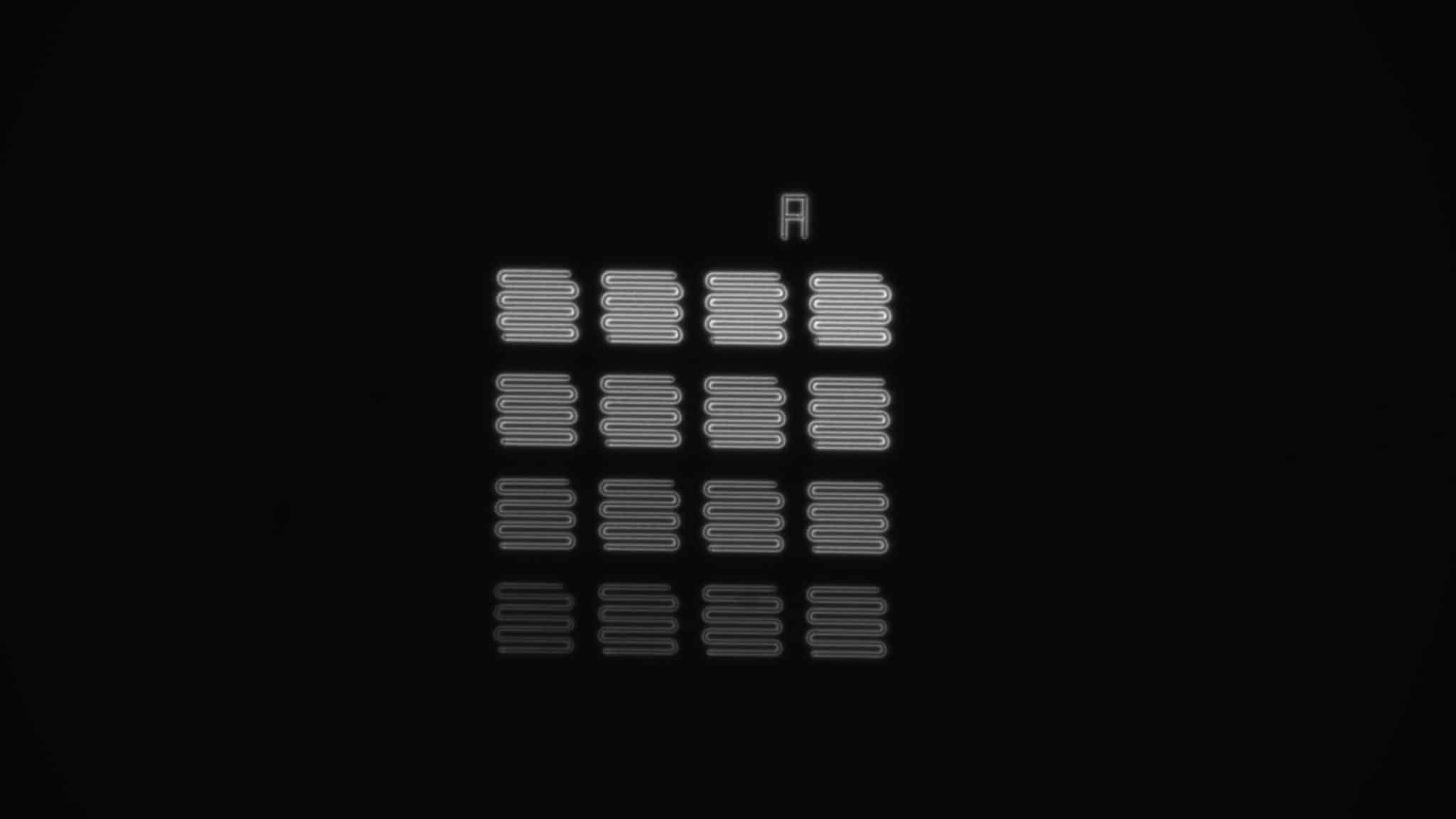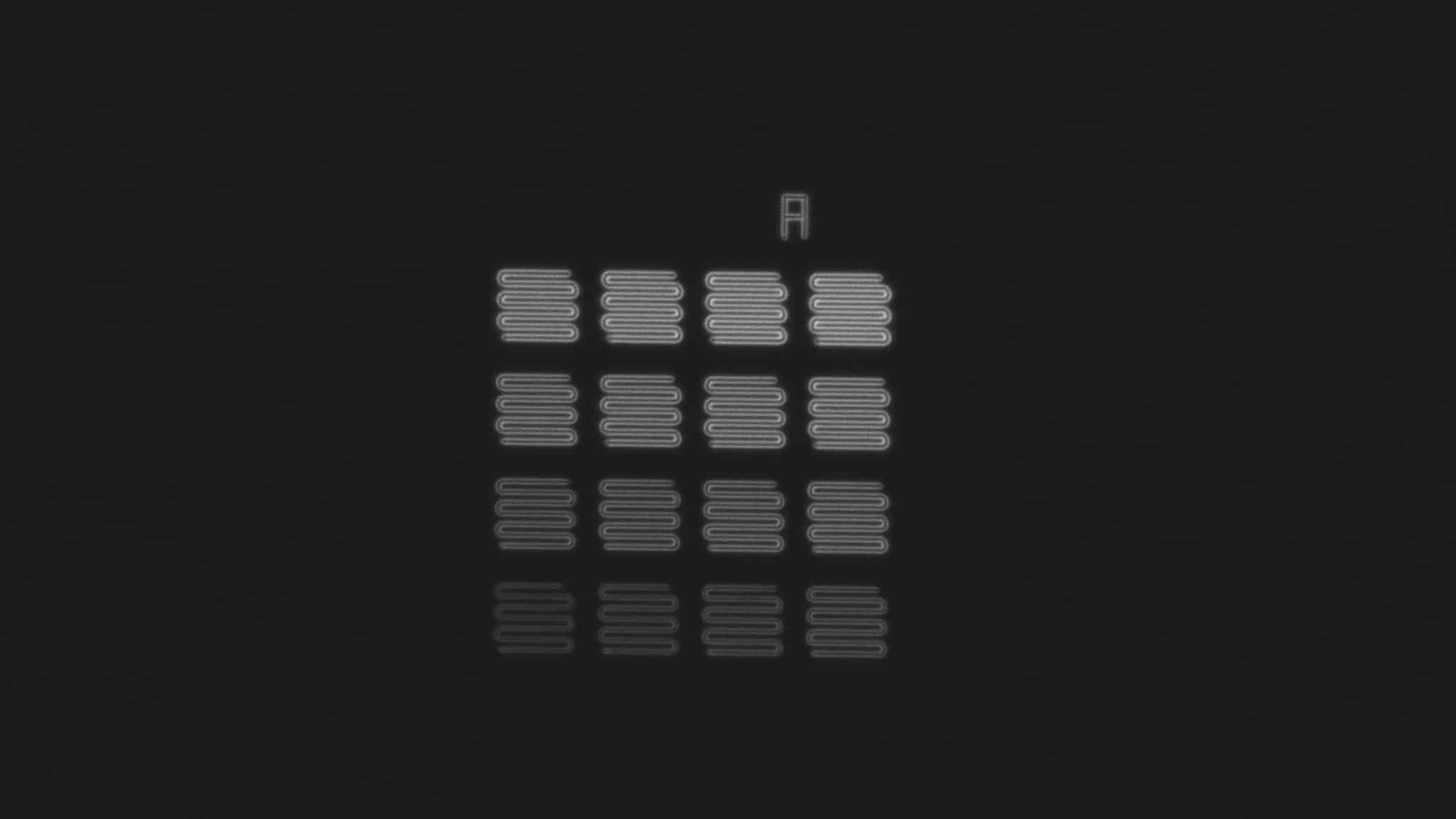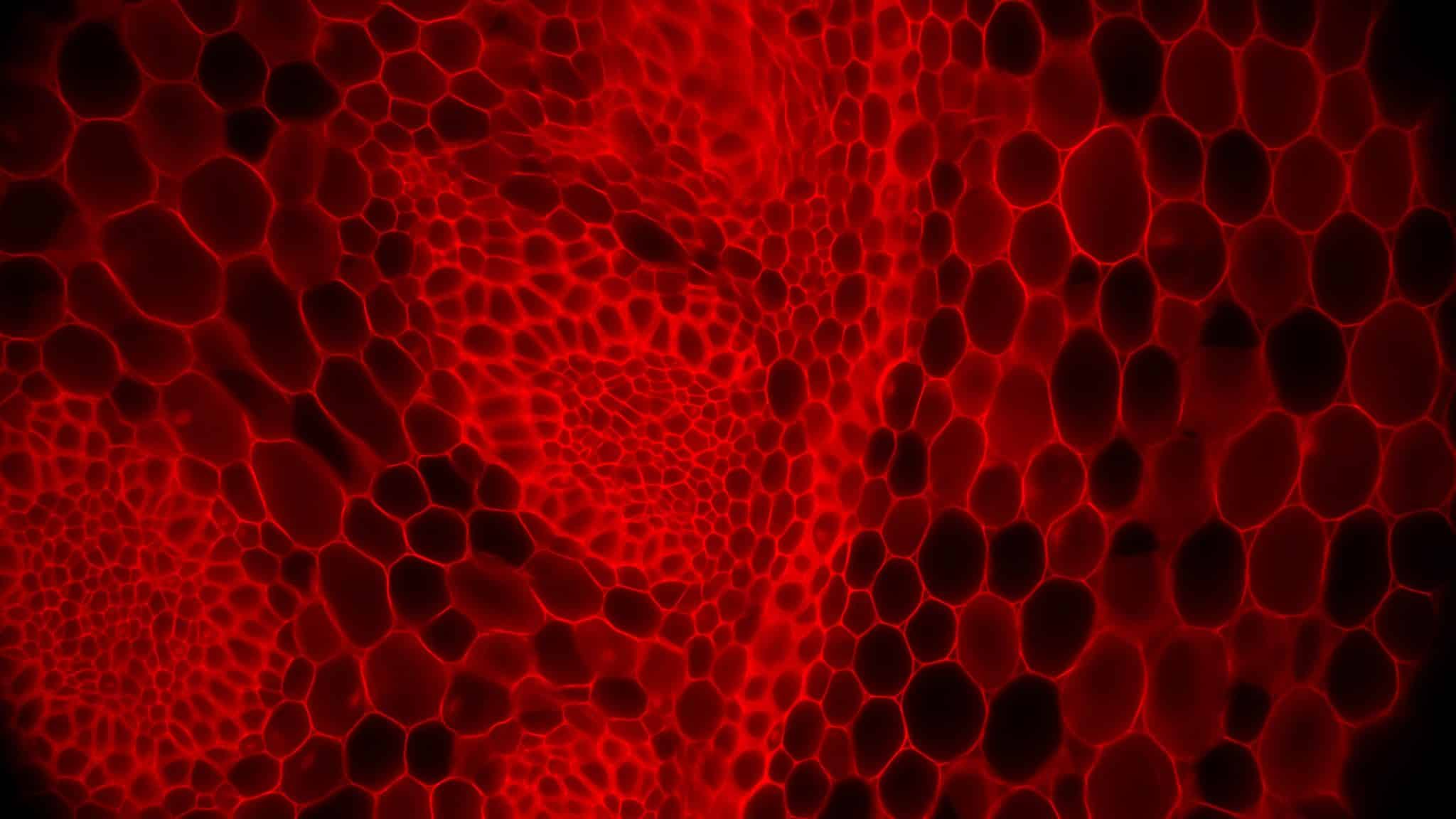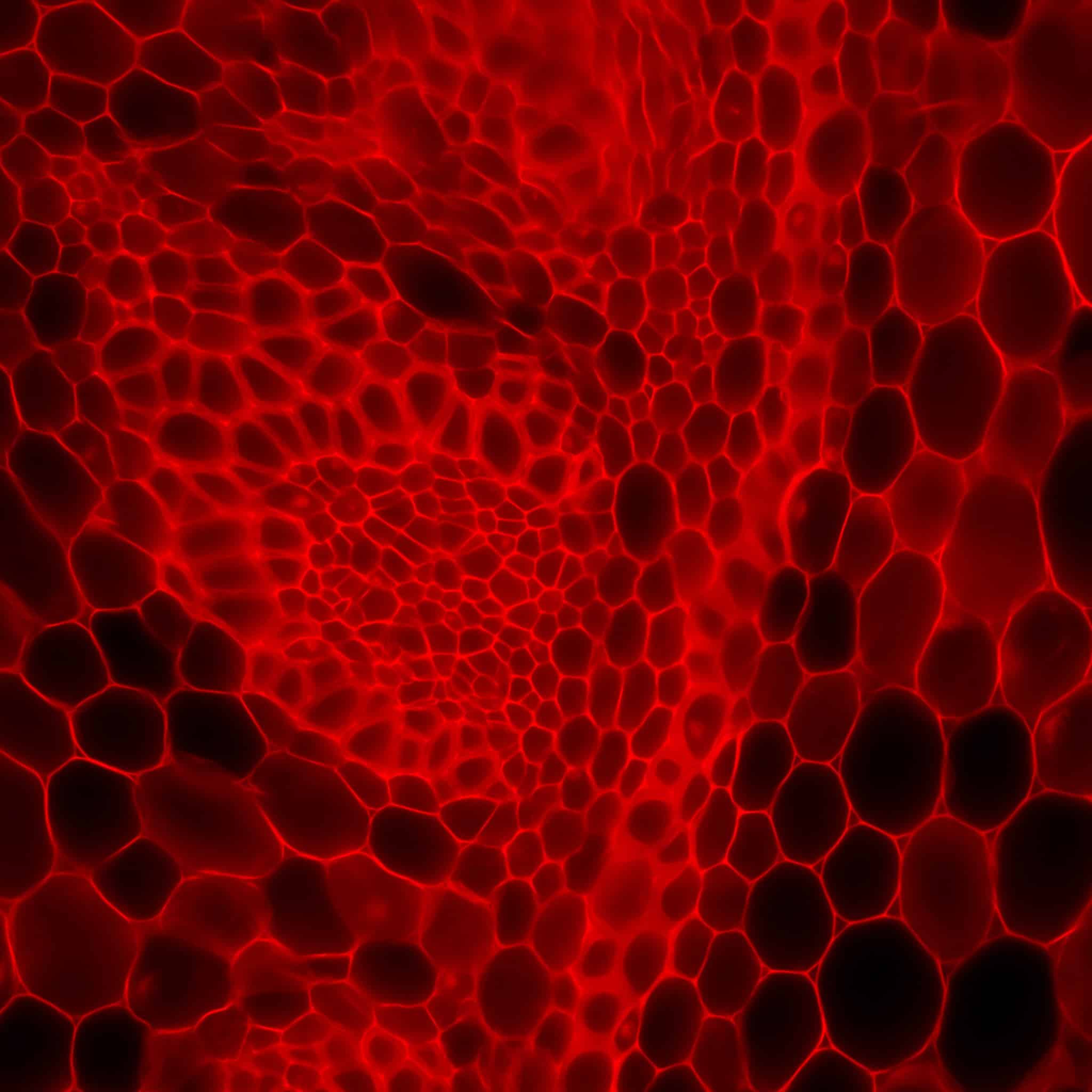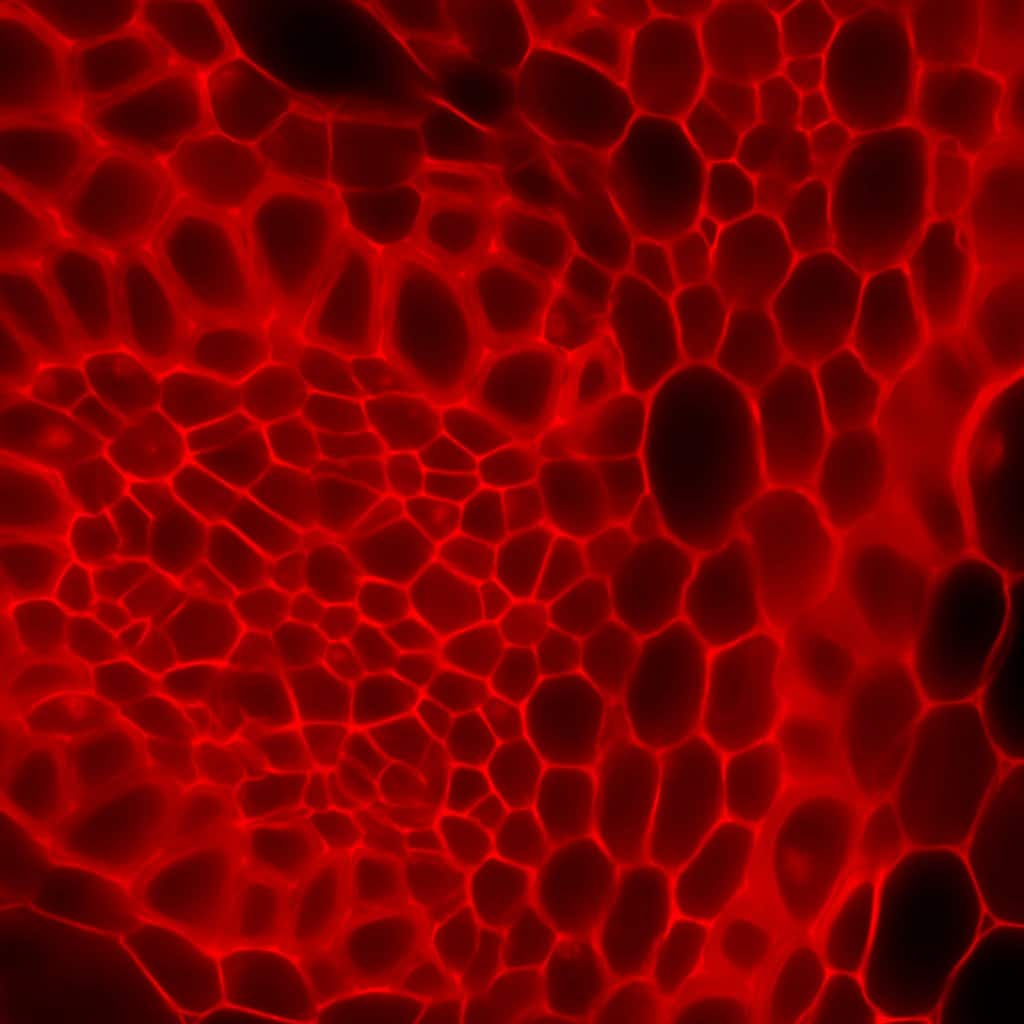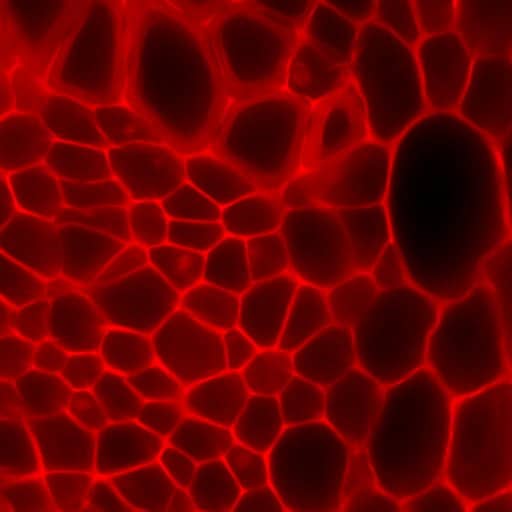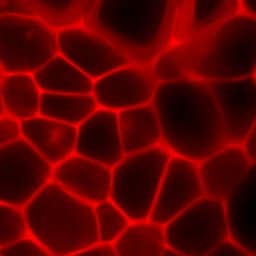ORCA-Quest 2 qCMOS camera, in a nutshell
The ORCA-Quest is the world’s first camera to incorporate a qCMOS image sensor and to be able to resolve the number of photoelectrons using a newly developed dedicated technology. The ORCA-Quest 2 is a new qCMOS camera, the successor to the ORCA-Quest with further advances such as faster readout speeds in extremely low-noise scan mode and increased sensitivity in the ultraviolet region.
The ORCA-Quest 2 quantitative CMOS (qCMOS) camera with Photon Number Resolving functionality is the leap in scientific camera evolution that transforms imaging into imagining. With ultra-quiet, highly-refined electronics, this camera is more than an image capture device; it is a precision instrument that unlocks the ability to investigate new photonics questions because it offers the quality and quantitative performance to detect meaningful data previously lost in the noise.
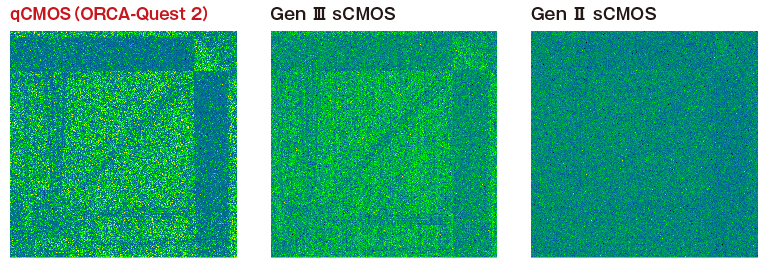
ORCA-Quest 2 qCMOS camera, in more details
Extreme low-noise performance
From its structure to its electronics, ORCA-Quest 2 has been designed and optimized to every aspect of the sensor so that it is able to detect weak light with high signal-to-noise. In addition to camera development, the custom sensor has been created with the latest CMOS technology, offering an extremely low noise performance of 0.30 electrons.
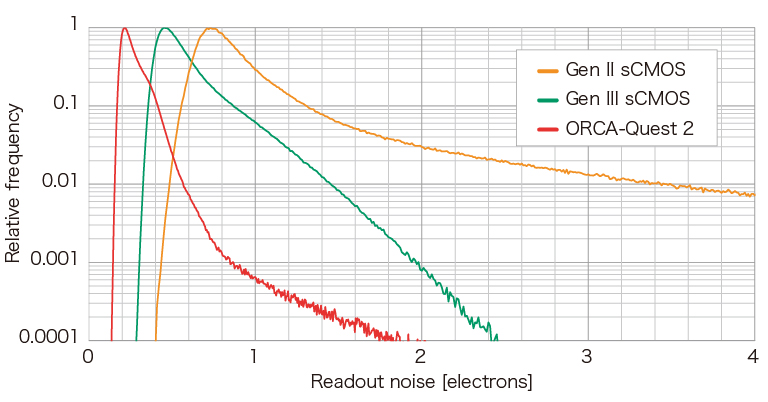
Realization of photon number resolving (PNR) output
Light is a collection of many photons. The sensor converts photons into electrons, and these electrons are called photoelectrons. Photon number resolving* is a method of accurately measuring light by counting photoelectrons. The camera noise must be sufficiently smaller than the amount of photoelectron signal in order to count these photoelectrons. Conventional sCMOS cameras make it difficult to count photons because they achieve a small readout noise, but still larger than photoelectron signal. The ORCA-Quest 2 uses advanced camera technology to count photoelectrons and deliver an ultra-low readout noise of 0.3 electrons rms (in Ultra quiet scan), while offering stability over temperature and time, individual calibration and real-time correction of each pixel value.
*Photon number resolving is unique and different from photon counting. More precisely ,the method resolves the number of photoelectrons. However, since single photon counting instead of single photoelectron counting has been used for a comparable method in this field, we will use the term “photon number resolving”. Fore more information about photon number resolving please check the Videos section as well as the Publications section.
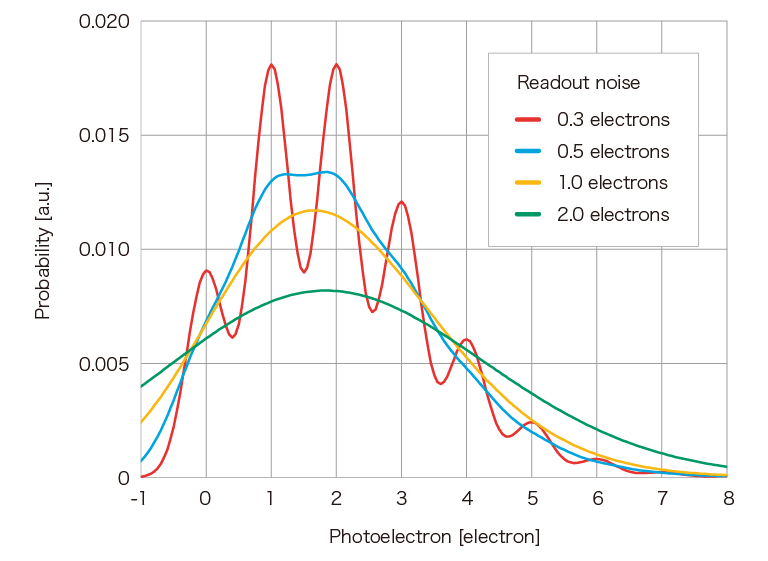
Back-illuminated structure and high resolution
The ORCA-Quest’s back-illuminated structure allows for High QE which is essential for high efficiency of detecting photons. Crosstalks occur in conventional back-illuminated sensors between pixels due to no pixel separation, and resolutions are usually worse than those of front-illuminated sensors. The ORCA-Quest 2 qCMOS camera’s sensor’s back-illuminated structure achieves high quantum efficiency and trench structure in one-by-one pixel for reducing crosstalk.
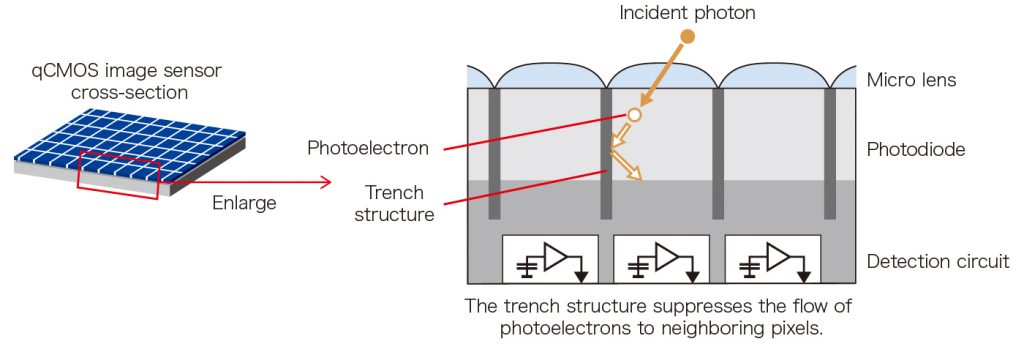
Realization of a large number of pixels and high speed readout
Typically, photon counting (PC) level images have been acquired using electron multiplication camera (such as EM-CCD camera) with about 0.3 megapixels. The ORCA-Quest 2 qCMOS camera can acquire PC level images but also photon number resolving images with 9.4 megapixels. In addition, it is not fair to compare readout speeds of cameras with different pixel number by frame rate. In such a case the pixel rate (number of pixels × frame rate), which is the number of pixels read out per second, is used. The fastest camera capable of SPC readout used to be the EM-CCD camera with about 27 megapixel/s, but the ORCA-Quest enables photon number resolving imaging is almost twice as fast at about 47 megapixel/s.
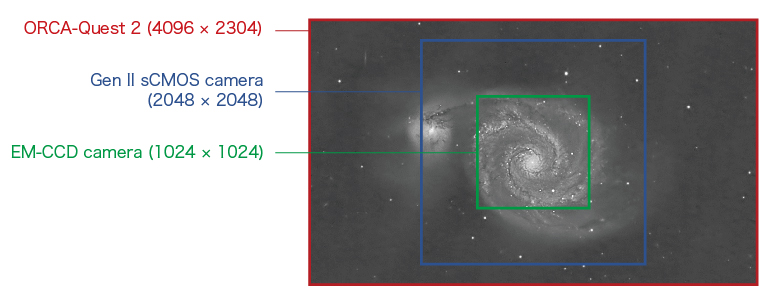
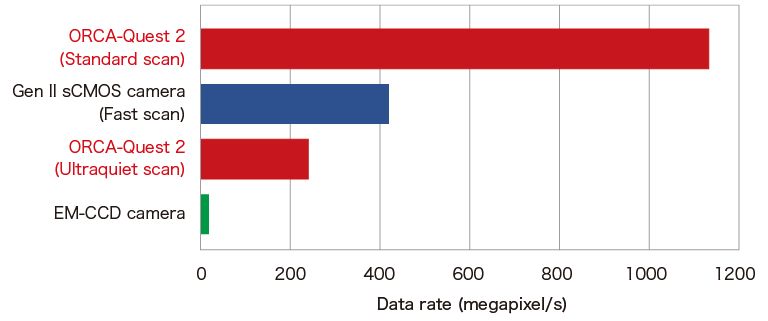
Evolution from ORCA-Quest (first generation)
Faster ultra-quiet-scan mode
ORCA-Quest had achieved the level to realize photon number resolving owing to ultra-low noise characteristic in ultra quiet scan mode. However, this availability was limited for users because the ultra-low noise was available only when the camera operated in 5 frame per second (in full resolution).
ORCA-Quest 2 has achieved 5 times faster framerate with a similar ultra-low noise characteristic by optimizing the sensor operation. Photon number resolving feature has become available for most of users now!
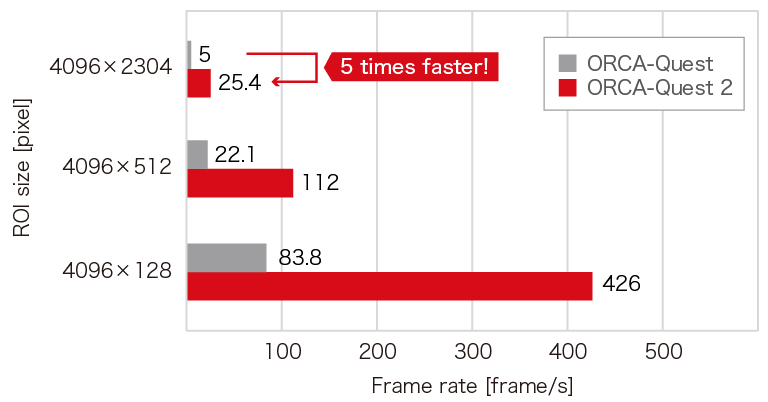
UV quantum efficiency improvement
ORCA-Quest possessed high quantum efficiency (QE) in UV region around 280 nm-400 nm, compared to most of conventional scientific cameras. Inspired by market needs, ORCA-Quest 2 has achieved even higher UV QE by optimizing AR coating of the sensor window, with no change of visible, near infrared wavelength region. The QE improvement expands the versatility of ORCA-Quest series in many kinds of application such as trapped ion quantum experiment.
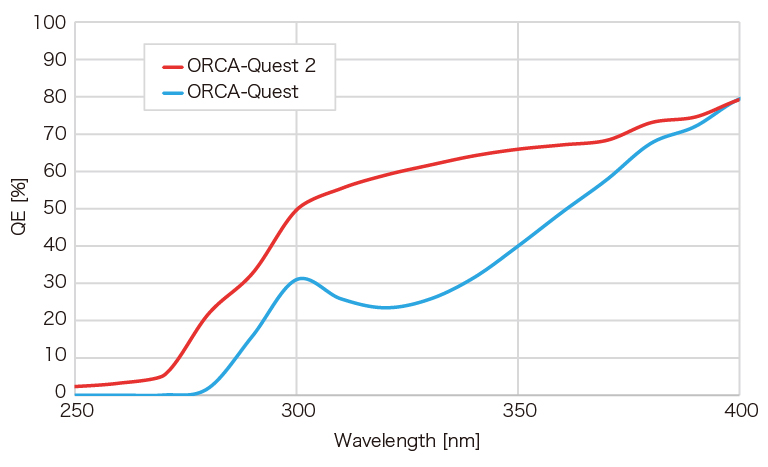
Raw data output
The feature allows you to apply any algorithms to estimate the number of photoelectron from raw digital signal.
Faster edge trigger mode
The new edge trigger mode enables you to input an external trigger and start exposure during rolling shutter readout, resulting in a faster frame rate.
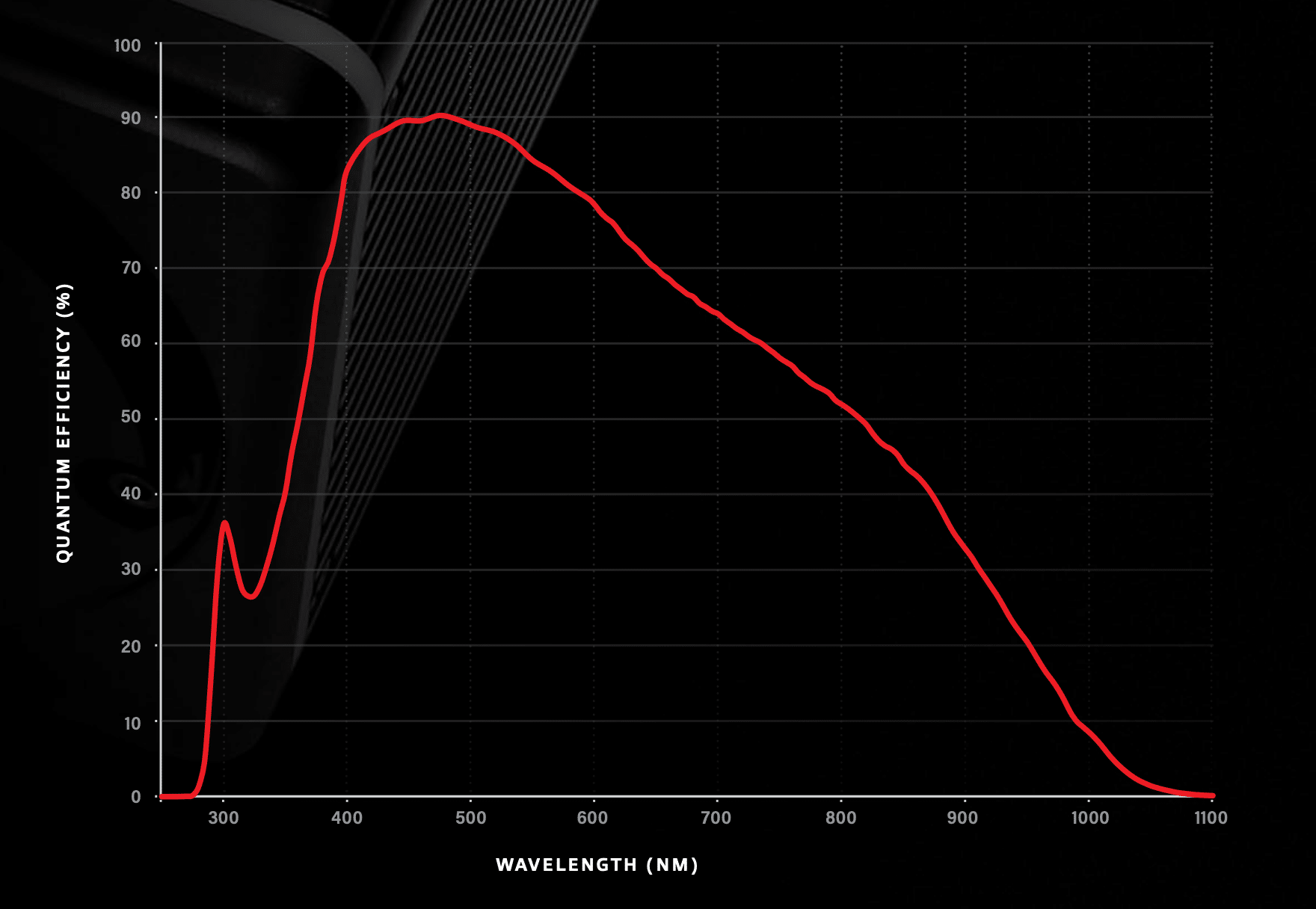
qCMOS Applications
Quantum technology
Neutral atom, Ion trap
Neutral atoms and ions can be regarded as so-called qubits because they can take on a superposition state in which even a single atom has multiple properties. This property is being actively investigated to realize quantum computing and quantum simulation. The state of the qubit can be determined by observing the fluorescence of trapped ions and neutral atoms, and a low-noise camera is used to read out the fluorescence.
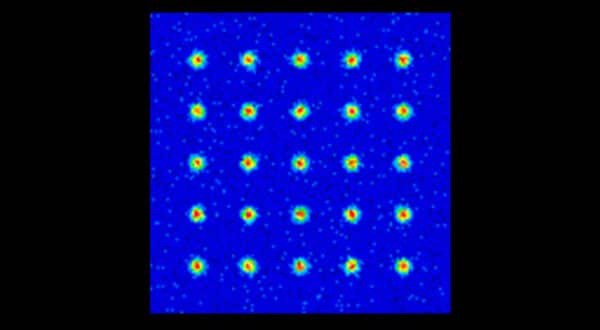
Astronomy
Lucky imaging
It can be very difficult to capture clear images of stars when observing from the ground due to atmospheric turbulence. However, with short exposures and the right atmospheric conditions, you can sometimes capture clear images. Lucky imaging is a method that entails acquiring many images and integrating only the clearest ones while aligning them.
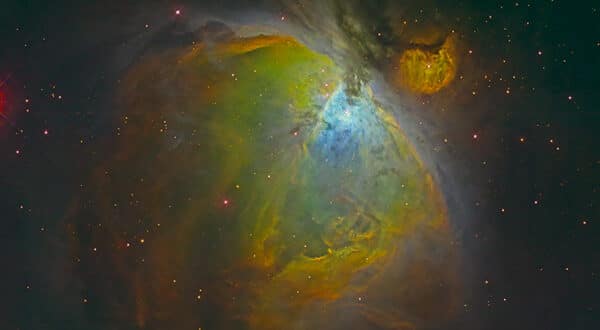
Raman spectroscopy
The scattering of light at a wavelength different from that of the incident light is known as the Raman effect. Raman spectroscopy is a technique for determining the material properties by measuring this wavelength. Raman spectroscopy enables structural analysis at the molecular level, providing information on chemical bonding, crystallinity, etc.
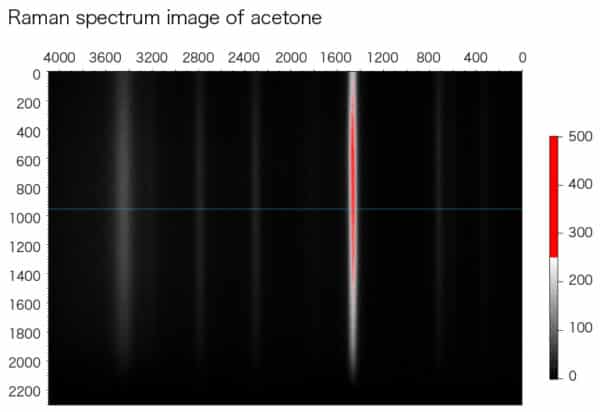
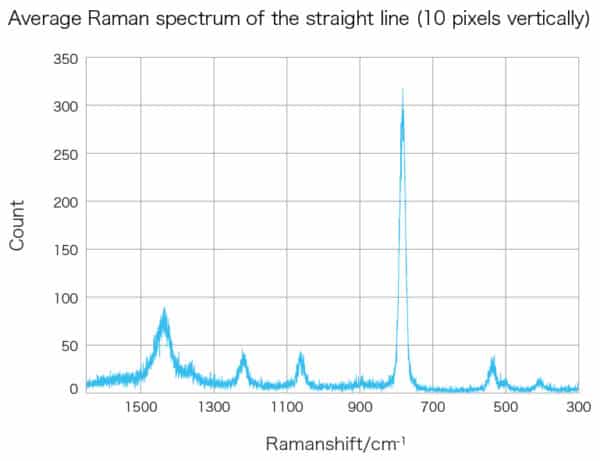
Delayed fluorescence in plants
Over a period of time, plants release a very small portion of the light energy they absorb for photosynthesis as light. This phenomenon is known as delayed fluorescence. By detecting this faint light, we can observe the effects of chemicals, pathogens, the environment, and other stressors on plants.
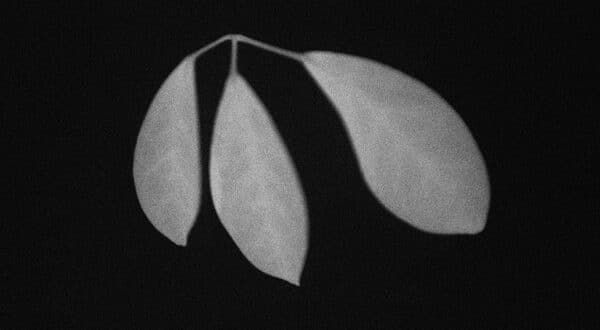
Hamamatsu Camera Line Up Catalog
HCImage Live Getting Started Guide
Publications about & with ORCA-Quest 2:
White Papers about ORCA-Quest:
Publications about ORCA-Quest:
- Efficient and accurate conversion-gain estimation of a photon-counting image sensor based on the maximum likelihood estimation. Katsuhiro Nakamoto & Hisaya Hotaka. Optics Express. October 2022.
Publications with ORCA-Quest:
- X-ray imaging with Micromegas detectors with optical readout. A. Cools, S. Aune, F. Beau, F.M. Brunbauer, T. Benoit, D. Desforge, E. Ferrer-Ribas, A. Kallitsopoulou, C. Malgorn, E. Oliveri
- Volumetric imaging of fast cellular dynamics with deep learning enhanced bioluminescence microscopy. Luis Felipe Morales-Curiel, Adriana Carolina Gonzalez, Gustavo Castro-Olvera, Li-Chun (Lynn) Lin, Malak El-Quessny, Montserrat Porta-de-la-Riva, Jacqueline Severino, Laura Battle Morera, Valeria Venturini, Verena Ruprecht, Diego Ramallo, Pablo Loza-Alvarez & Michael Krieg. Nature Communications Biology. December 2022.
- Quantum imaging with a photon counting camera. Osian Wolley, Thomas Gregory, Sebastian Beer, Takafumi Higuchi & Miles Padgett. Nature Scientific Reports. May 2022.
- Multiphoton imaging using a quantitative CMOS camera. Mbaye Diouf, Zixi Lin, Krishangi Krishna & Kimani C. Toussaint Jr. SPIE BiOS. January 2022.
Software for ORCA-Quest 2:
HCImage Live GUI:
HCImage Live software is included with the ORCA-Quest camera and is supported under Windows 10, 8.1 & 7 (both 32-bit & 64-bit) OS. Software user guides can be download under the “Downloads” tab. More information regarding HCImage Live GUI software can be obtained at https://hcimage.com/hcimage-overview/hcimage-live/.
Other Software Compatibility:
The ORCA-Quest camera can also be operated through Micro-Manager.
Options for ORCA-Quest 2:
- To operate the camera at full speed it is required to use compatible CoaXPress frame grabber and cables which can be ordered along with the camera.
- This model can also be ordered to be compatible with Nikon F-mount lenses.

